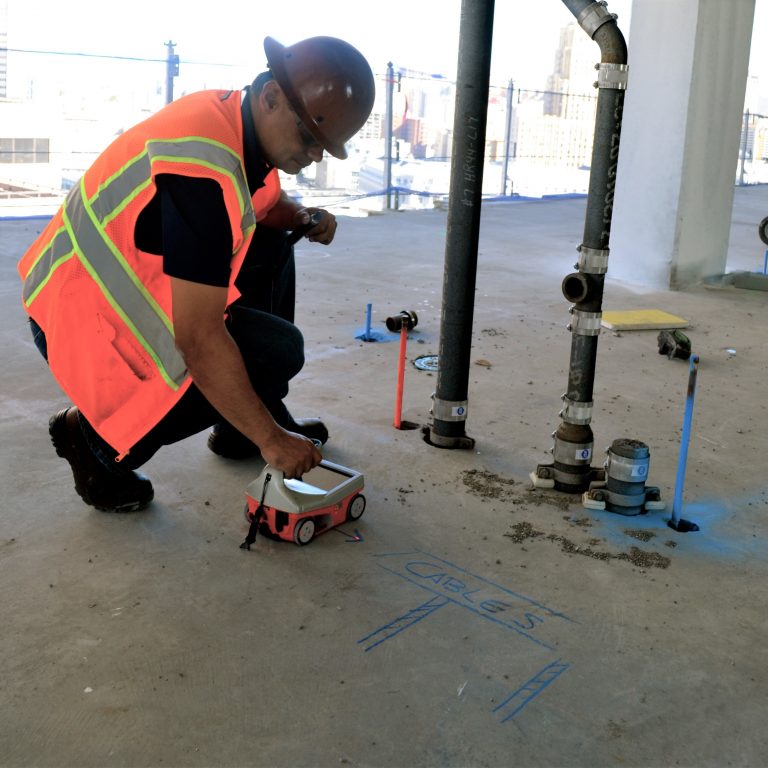Explore RainierGPR Service Areas for Expert Concrete Scanning
Explore RainierGPR Service Areas for Expert Concrete Scanning
Blog Article
Concrete Scanning: An Essential Step In The Direction Of Ensuring Architectural Honesty and Security
In the realm of construction and infrastructure upkeep, the significance of concrete scanning can not be overstated. This careful procedure holds the vital to unveiling possible risks concealed beneath the surface area of seemingly strong structures. By using innovative innovation and techniques, concrete scanning acts as a critical tool in guaranteeing that the honesty and safety of bridges and buildings are promoted to the highest possible requirements. Nevertheless, beyond its surface-level effects, the role of concrete scanning expands far deeper than meets the eye.
Value of Concrete Scanning
Concrete scanning plays a crucial role in guaranteeing the structural stability and security of structures and framework jobs. By using advanced modern technologies such as ground-penetrating radar (GPR) and electro-magnetic induction, experts can non-destructively inspect concrete structures to discover prospective defects, gaps, ingrained objects, and reinforcement design. This process makes it possible for early discovery of anomalies that could jeopardize the security of a framework, preventing expensive problems and guaranteeing the security of passengers.
Concrete scanning is especially vital during the preparation and building and construction stages of a job. Before boring, reducing, or coring into concrete, scanning helps determine the specific areas of rebar, post-tension cables, and other ingrained components, decreasing the threat of unexpected hits that might lead to architectural weaknesses. Furthermore, concrete scanning aids in top quality control by verifying the density of concrete covers and finding any kind of discrepancies that may influence the total durability of the framework. Eventually, spending in concrete scanning solutions is not just an aggressive procedure to minimize risks but likewise a basic step in the direction of keeping the long-term safety and security and security of structures and framework.
Technology for Concrete Inspection

Benefits of Early Detection
Prompt detection of architectural concerns can significantly reduce risks and guarantee the durability of building and construction tasks. By identifying potential troubles early on in the construction procedure, stakeholders can take aggressive procedures to deal with issues before they escalate into larger and much more expensive issues. Among the essential benefits of early discovery is the avoidance of architectural failings, which can pose serious safety and security Learn More risks and cause task hold-ups and monetary losses.
In addition, very early discovery enables timely repairs and upkeep, which can help prolong the life expectancy of the framework. By dealing with concerns immediately, building and construction teams can avoid pricey repair services or also the demand for premature substitute of structural components. This aggressive technique not just conserves time and cash yet also enhances the overall security and toughness of the construction task.
In addition, very early detection can enhance project planning and decision-making by giving stakeholders with important insights right into the problem of the framework. Equipped with this information, job managers can make educated choices pertaining to building methods, products, and timelines, causing extra successful and reliable project results.
Ensuring Structural Stability
Ensuring the architectural security of a building project is extremely important to its safety and security and longevity. Concrete scanning plays a critical role in making certain architectural go now security by detecting possible issues such as gaps, delamination, or reinforcement deterioration that might endanger the integrity of the framework over time.
By making use of advanced scanning innovations like ground-penetrating radar (GPR) and electro-magnetic induction, construction experts can non-invasively check concrete structures to identify locations of worry underneath the surface. This aggressive approach enables the very early discovery of weak points or defects, enabling prompt repair work or reinforcement to avoid structural failings.
Regular concrete scanning throughout different construction stages and throughout the life process of a framework can aid keep its security, minimize risks, and make certain the security of owners. By prioritizing architectural stability via concrete scanning, building and construction jobs can improve their resilience and durability, eventually adding to better safety and security and durability.

Stopping Vital Failures
To secure versus catastrophic occasions, precise tracking and proactive maintenance are vital in avoiding critical failures within structural frameworks. Discovering prospective concerns before they rise is vital to stop structural failings. Executing regular assessments, such as concrete scanning, can disclose hidden flaws like voids, splits, or deterioration that might compromise site the integrity of a framework. By utilizing advanced scanning modern technologies like Ground Passing through Radar (GPR) or Concrete X-ray, engineers can non-destructively assess the problem of concrete and identify weak points that require support or fixing - RainierGPR Service Areas.

Conclusion
In verdict, concrete scanning plays an essential function in ensuring architectural stability and safety and security by making use of innovative innovation for early detection of potential issues. This aggressive technique helps avoid vital failings and makes sure the security of frameworks. It is crucial to prioritize concrete examination as a basic technique to protect the durability and safety of structures and infrastructure.
Concrete scanning plays an essential function in making certain the structural stability and security of buildings and facilities projects. Furthermore, concrete scanning help in top quality control by confirming the density of concrete covers and spotting any discrepancies that may influence the general sturdiness of the framework. Concrete scanning plays a critical function in guaranteeing structural security by discovering potential concerns such as spaces, delamination, or support deterioration that can jeopardize the stability of the framework over time.

In final thought, concrete scanning plays a vital role in making sure architectural honesty and safety by utilizing sophisticated innovation for very early detection of potential concerns.
Report this page